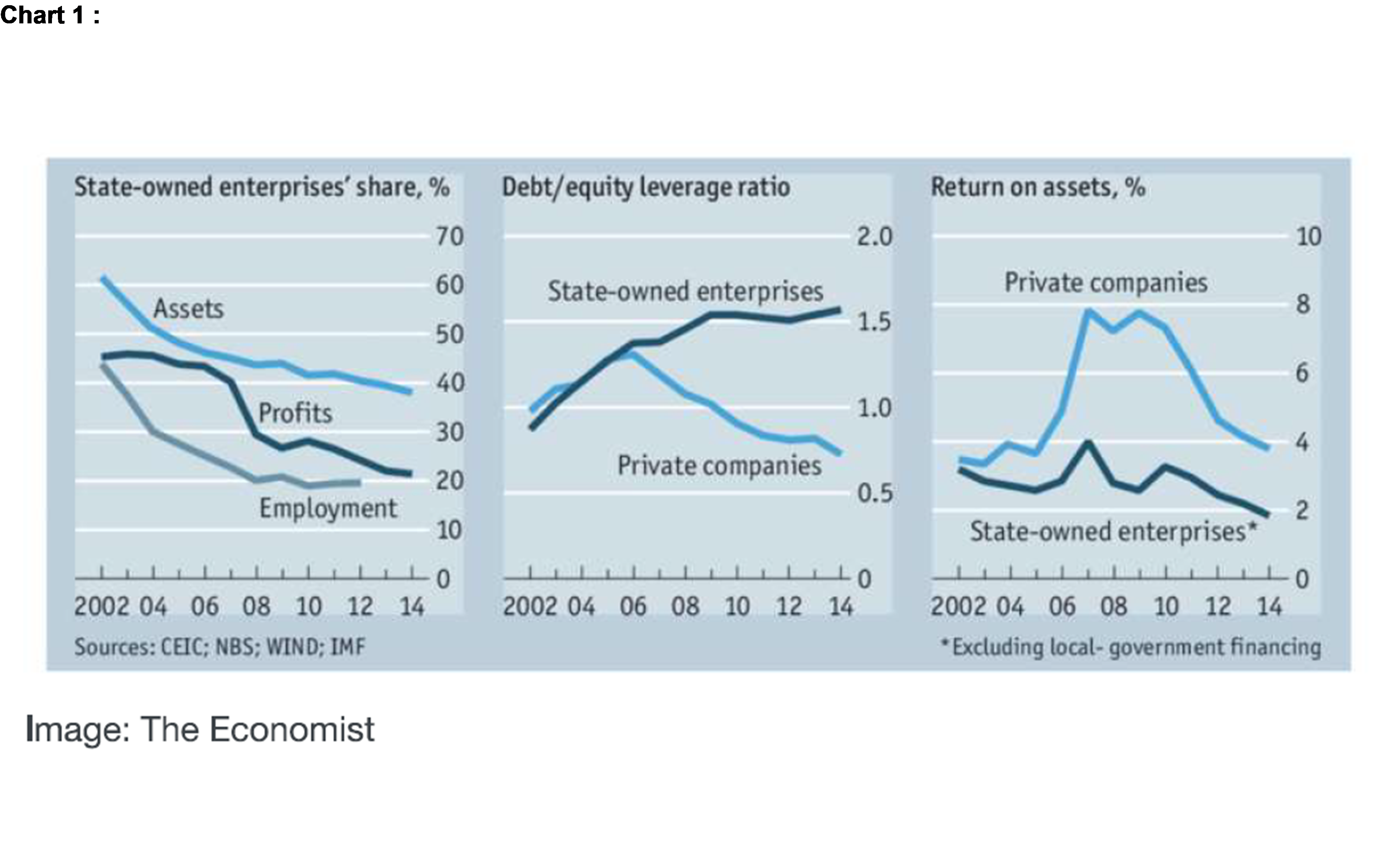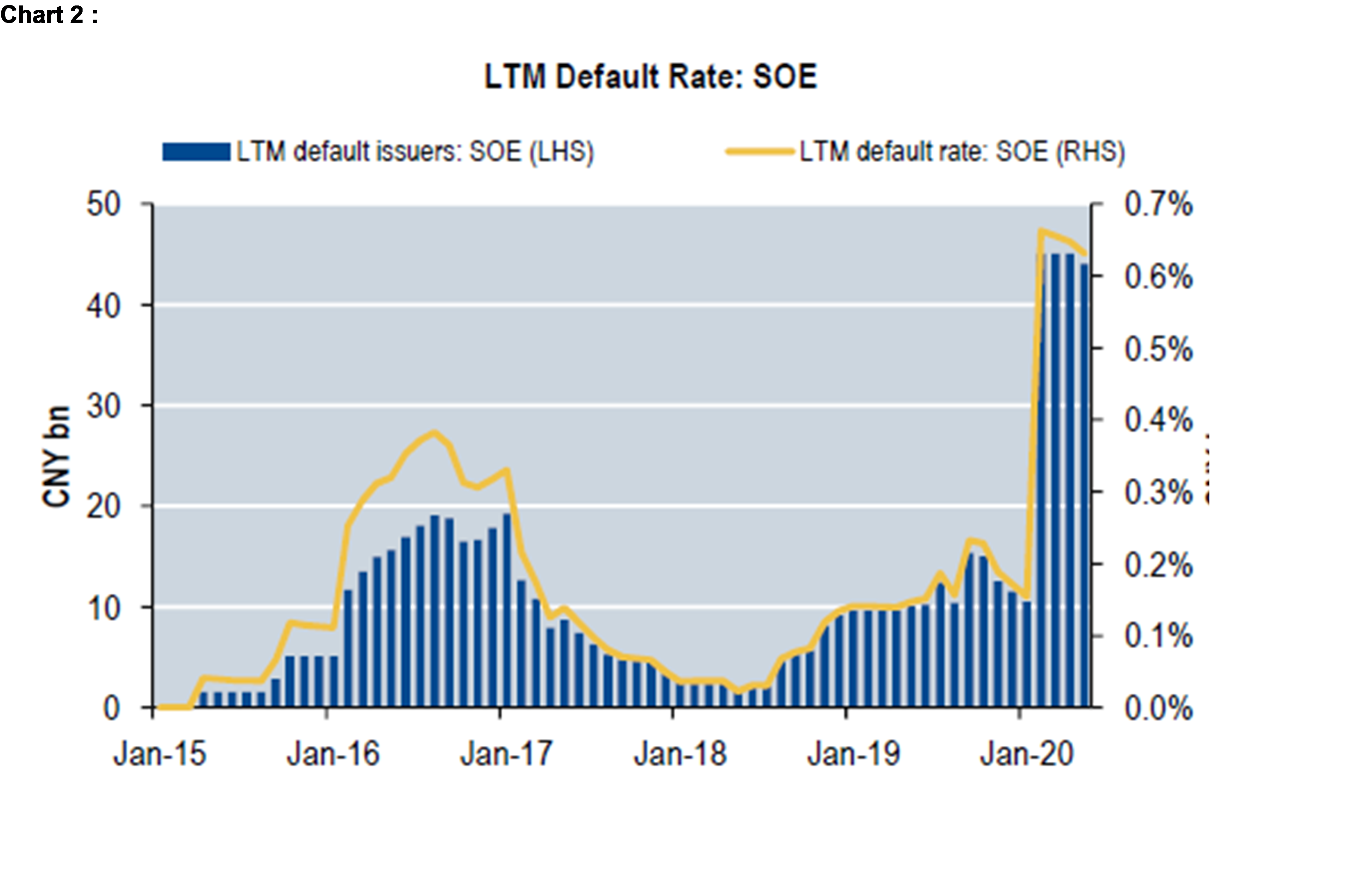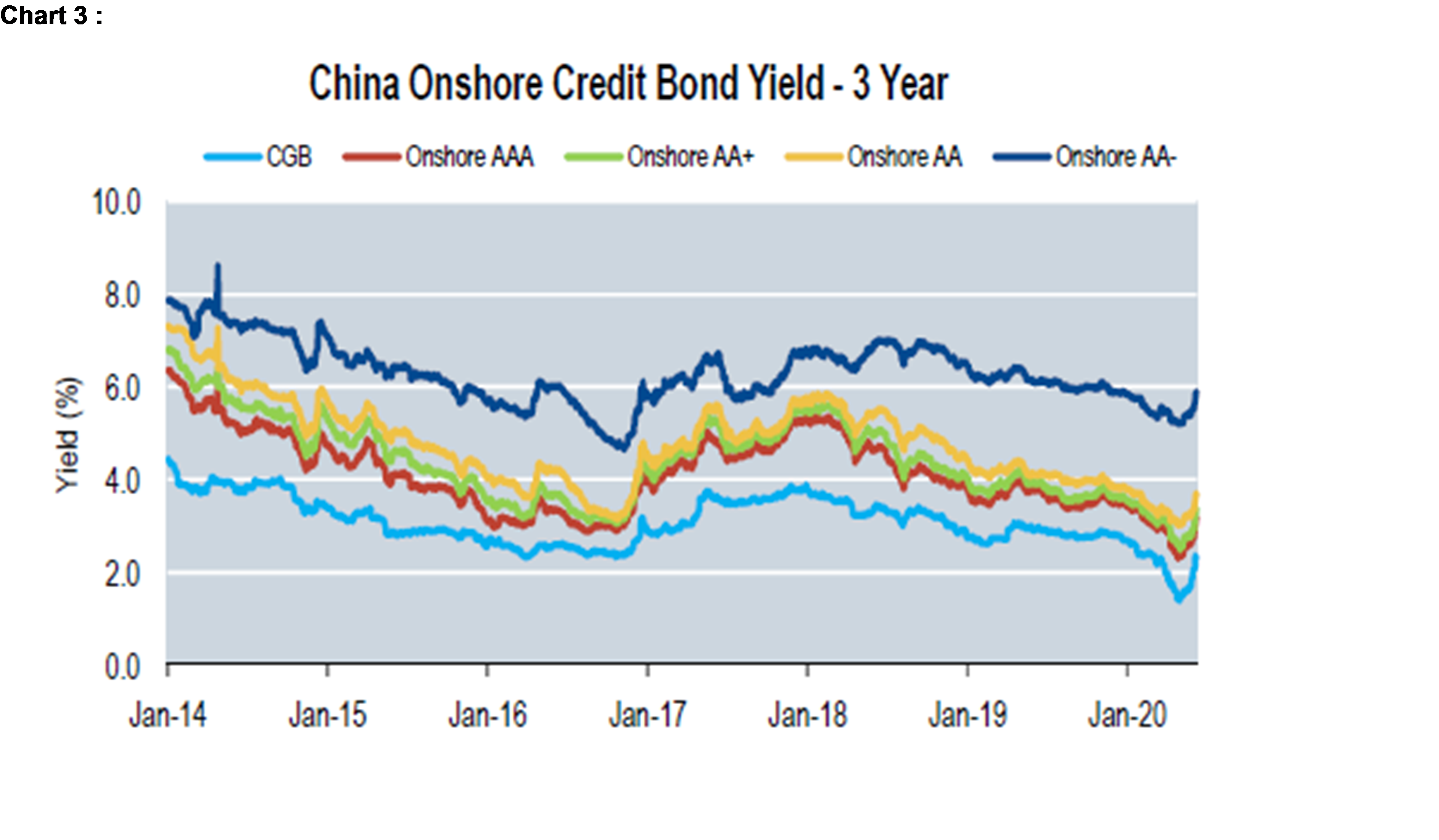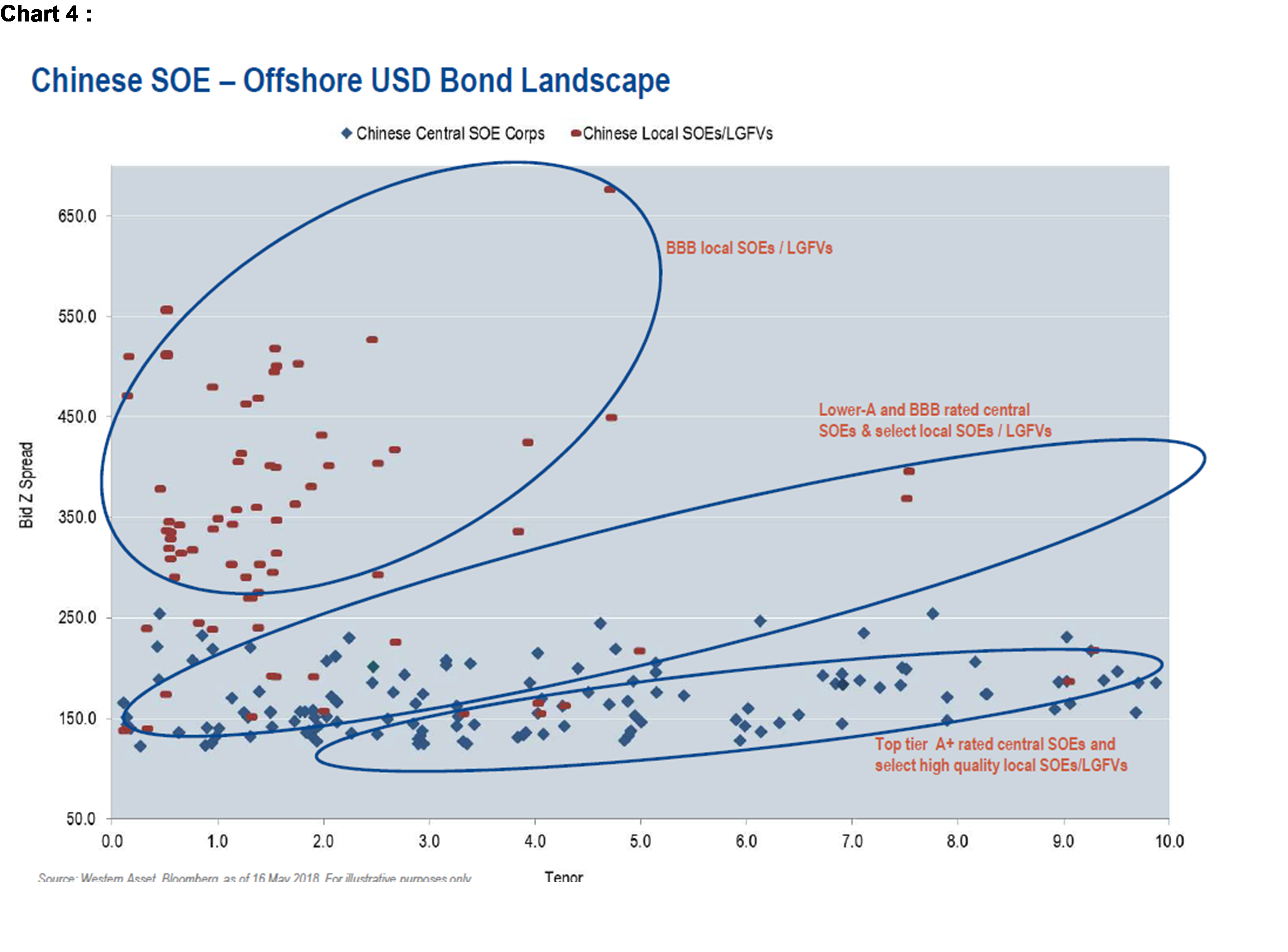Chinese state-owned enterprises: Not all are equal
Traditionally, bonds issued by state-owned enterprises (SOEs) in China were viewed as effectively risk-free given the implicit backing by the central government. Against such a backdrop, there was little need for investors to differentiate between issuers. This view of SOEs is changing as the Chinese economy evolves and greater tolerance to selective SOE defaults is accepted by the central government.
SOEs have historically played an important role in the allocation of resources by the central government as China industrialised at a rapid pace from the 1970s. Yet the landscape has been inexorably changing as China moves from an investment-driven economy focused on exports to an innovation-driven economy based more around domestic consumption. On the face of it, there would appear to still be a key role for SOEs as traditionally they have been a key conduit for the central government undertaking reforms. Yet this is only partially true.

The issue with viewing the SOE sector in aggregate as part of the solution to the transition of the economy is that (as highlighted by Chart 1) they are on average over-leveraged and structurally less efficient than their private peers. These characteristics have resulted in a lack of relative growth in the sector which has also reduced the importance of the sector to economic growth. By implication, this means that material parts of the SOE sector are more likely to act as a headwind to economic growth. Despite this, the Chinese government is still keen on supporting SOEs and is committed to making them stronger and more efficient.
Through a process of reorganisation and restructuring the central government is aiming to make the SOE sector more competitive while holding absolute control over their final decision-making structure. Such a process is consistent with the government evolving its role thereby allowing the market to be the ultimate resource allocator while maintaining a close eye on market forces and reserving the ‘intervention option’ in critical situations. This evolving dynamic will see the role of SOEs morph from being the broad-based allocators of resources to the economy to being the mechanism via which governments can more selectively impact on or direct market forces.
The dual objectives of maintaining a level of control over the economy while evolving the SOE sector will inevitably result in some SOEs being viewed by the central government as more important than others. There are accordingly two main factors driving the perceived sustainability of individual SOEs. The initial factor is whether the sector the SOE is operating in, or service it is providing, is viewed by the government as being strategic in nature. Prime examples of nationally strategic sectors include defence, energy, telecoms, aviation and railway systems. What is considered as strategic may also be more nuanced in that it includes those sectors/services viewed as important at a regional as opposed to national level. The second factor involves the financial capacity of the relevant level of government to support the SOEs established. Accordingly, SOEs owned by lower levels of government and/or catering to non-strategic requirements are more likely, all else being equal, to be viewed as less important.
This layering of importance for SOEs has implications as restructuring the SOE sector inevitable involves the central government moving to reduce the level of moral hazard associated with the SOE sector; i.e. moving more risk to the market. To facilitate this transfer of risk to the market, the central government appears to be making a greater distinction between an SOE being allowed to fail and it being allowed to default. The increased tolerance for allowing SOEs to default can be seen in Chart 2. Since the first SOE default in 2014, SOEs defaulting on borrowings, though on aggregate still at a low level, is not an uncommon event.

Such political tolerance to selective defaults is particularly relevant given the level of bond issuance by SOEs. In turn, this means that investors can no longer view all SOEs as being equal and that greater risk differentiation is inevitably being built into pricing SOE bonds. This increase in risk differentiation can be seen in the difference in yield for AA+ vs AA- issuers shown in Chart 3.

From virtually no risk differentiation prior to 2014, the level of differentiation between the lowest quality SOEs (AA-) and the rest has increased materially over the last six years. The level of risk differentiation can be further seen in the offshore bond market were both rating and quality of government support impact materially upon the spread demanded by investors resulting in clear zones of risk differentiation within the market for SOE bonds (Chart 4 below).

As the central government continues the process of reforming the SOE sector to increase efficiency, it is increasingly likely that selective defaults will be allowed. Which SOEs are allowed to default will depend upon (a) the level of financial resources available to the sponsoring government authority and (b) the strategic importance of the activities undertaken by the SOE. Based upon these factors the market has already begun the process of differentiating between the default risk between SOEs. Such a process is likely to continue going forward putting upward pressure on the premiums attached to ‘weaker’ SOEs. Understanding the risks associated with SOEs and how they are evolving will therefore be an increasingly important part of the active management required to earn the best returns from this sector.
Never miss an update
Enjoy this wire? Hit the 'like' button to let us know. Stay up to date with my content by hitting the 'follow' button above and you'll be notified every time I post a wire.
Not already a Livewire member? Sign up today to get free access to investment ideas and strategies from Australia’s leading investors.
3 topics
Clive Smith is an investment professional with over 35 years experience at a senior level across domestic and global public and private fixed income markets. Clive holds a Bachelor of Economics, Master of Economics and Master of Applied Finance...
Expertise
Clive Smith is an investment professional with over 35 years experience at a senior level across domestic and global public and private fixed income markets. Clive holds a Bachelor of Economics, Master of Economics and Master of Applied Finance...

